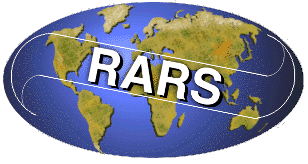
|
Radio Society |
 |
|
The Raleigh Amateur Radio Society (RARS) is the largest Amateur Radio Club in North Carolina, with almost 300 members. The club meets monthly on the 1st Tuesday. RARS supports its membership with a programs and activities, and it serves the community by providing radio communications and operators for many public service and emergency communications related events. Amateur Radio is both a non-commercial radio communications hobby and service. It's a hobby because most Amateurs, or "hams", are drawn by a fascination with radio communications. It's a service because each ham is licensed by the Federal Communications Commission after passing an examination, and because we earn the privilege to use the spectrum we occupy by advancing the communications art, and providing service to the public. There is tremendous variety in Amateur Radio, but most Amateurs have equipment in their home, in their vehicle, or even in their hand that allows them to communicate by radio locally and worldwide. The communication is direct from radio to radio - no wires, and no phone companies or service providers are in the middle. Amateur Radio began at the turn of the last century, when hobbyists began imitating and building on the work of the early inventors. The service was officially recognized by Congress in 1912, when the first laws covering radio were passed. Our national organization, the American Radio Relay League (ARRL), was formed in 1915 in Hartford, CT. Most of the time, Amateur Radio operators enjoy their hobby by communicating with other hams, using voice, Morse code, several digital modes and even television. But in times of community need or emergency, they use their equipment and experience to provide communications to state and local Emergency Management, the Red Cross and other service organizations. The most frequent service activity comes as part of the National Weather Service SKYWARN program in which hams, trained as weather spotters, use their radio network to rapidly report ground observations of severe weather.
Growth is
flat, with competition for
the interest of technically minded young people coming from the
internet and
computer fields.
Spectrum pressure: The exploding wireless telecom industry and its need for new spectrum puts continuous pressure on the FCC and Congress to take the frequencies allocated to Amateurs and transfer them for commercial use. BPL - Broadband Over Powerlines - uses high frequency radio signals to superimpose Internet data on power lines for delivery to customers. Those radio signals can leak from the power lines and interfere with radio reception for nearby hams. Progress Energy tested BPL in 2004 and decided not to persue the technology. Antenna restrictions from municipalities and homeowner associations make setting up and operating an Amateur Radio station difficult or impossible in many neighborhoods.
It seems like almost everyone has a cell phone. But that provides only one-to-one communication that can be expensive to use. Our FM repeater network connects hams using mobile and handheld radios to hundreds of other hams locally, something like an on-air chat room. But the real opportunity in ham radio is the ability to innovate. Engineering schools teach theory. Amateur Radio provides hands-on learning and wide open avenues to experiment. Before transmitting, every ham must earn a license from the FCC by passing a test. The tests cover basic electronics, regulations, operation and safety. Morse code is not required for the entry level license, but it is required for the higher classes. See our page on Amateur Radio Classes for details. Early radio, about 1900 to 1920, was all wireless telegraphy (Morse code), and the first commercial and military radio operators were drawn from the ranks of the professional wired telegraphers. One can imagine their reaction to the "amateurs" who shared the airwaves – they were not pleased, especially since the technology of the day mixed everyone's signal together, and there could be a lot of interference between the Amateurs and the commercial stations. So they probably called these newcomers "hams", too. How it changed from an insult to a term the Amateurs proudly applied to themselves is lost to history. |